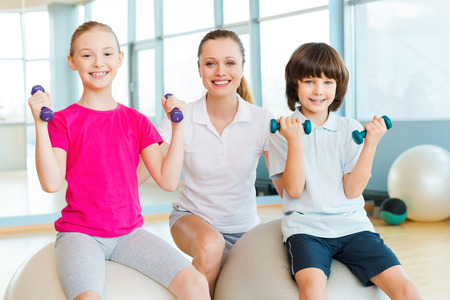KEY MESSAGES TO CONVEY TO OUR CHILDREN:
- Adolescents and young adults, regardless of gender, benefit from physical activity.
- Physical activity does not have to be strenuous to be beneficial.
- Moderate amounts of daily physical activity are recommended for people of all ages. This amount can be obtained in longer sessions of moderately intense activities, such as brisk walking for 30 minutes, or in shorter sessions of more intense activities, such as jogging or playing basketball for 15-20 minutes.
- Greater amounts of physical activity are even more beneficial, up to a point. Excessive amounts of physical activity can lead to injuries, menstrual abnormalities, and bone weakening.
FACTS ABOUT EXERCISE AND YOUTH
- Nearly 50% of American youths aged 12-21 years are not vigorously active on a regular basis.
- About 14 percent of young people report no recent physical activity. Inactivity is more common among females (14%) than males (7%) and among black females (21%) than white females (12%).
- Participation in all types of physical activity declines strikingly as age or grade in school increases.
- Only 19% of all high school students are physically active for 20 minutes or more, five days per week, in physical education classes.
- Daily enrollment in physical education classes dropped from 42% to 25% among high school students between 1991 and 1995.
- Well designed school-based interventions directed at increasing physical activity in physical education classes have been shown to be effective.
- Social support from family and friends has been consistently and positively related to regular physical activity.
BENEFITS OF PHYSICAL ACTIVITY
We are all familiar with the benefits of fitness, but they are particularly important for our youth. Beginning a good fitness program now will enhance their well being for the rest of their lives. As a review, the benefits of physical activity include:
- Helps build and maintain healthy bones, muscles, and joints.
- Helps control weight, build lean muscle, and reduce fat.
- Prevents or delays the development of high blood pressure and helps reduce blood pressure in some adolescents with hypertension.
WHAT CAN DO IN OUR SCHOOLS AND COMMUNITIES TO HELP?
- Provide quality, preferably daily, K-12 physical education classes and hire physical education specialists to teach them.
- Take a bike ride, hike, walk, play ball, or other activity with our youth. It’s a great way to spend quality time with them.
- Create opportunities for physical activities that are enjoyable, that promote adolescents’ and young adults’ confidence in their ability to be physically active, and that involve friends, peers, and parents.
- Provide appropriate physically active role models for youths, i.e., if we want our children to be fit, we should as parents, set the example.
- Provide access to school buildings, playgrounds, and community facilities that enable safe participation in physical activity.
- Provide a range of extracurricular programs in schools and community recreation centers to meet the needs and interests of specific adolescent and young adult populations, such as racial and ethnic minority groups, females, persons with disabilities, and low-income groups.
- Encourage health care providers to talk routinely to adolescents and young adults about the importance of incorporating physical activity into their lives. Invite such professionals to your school or other activities and let them express the importance of fitness to our youth.






